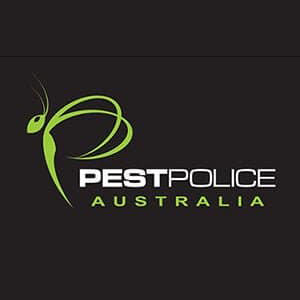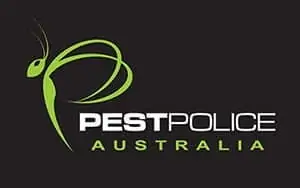Pests are a serious threat to humans and properties and a passive approach to these menaces will certainly come back to bite you. This is why professional pest control is necessary. However, rashly choosing any pesticide you see on the retail shelves can be as bad as doing nothing about an infestation problem, though.
Commercial Pesticides and Their Downside
Designed to eradicate feral animals or insects, pesticides are commercially concocted solutions that promise to get rid of pests in properties. They’re extensively used in homes, offices, storerooms, gardens, shops, and other public edifices.
While their extensive use has been effective against a variety of pests, these substances can contaminate the land, air, and water, often causing great harm (even death) to other living things nearby. They are mostly used in three different forms: liquids, solids (powder form), and aerosols.
Quick Overview on Integrated Pest Management
To improve the safety and efficacy of the pest extermination process, Australian pest control companies implement the integrated pest management (IPM). It’s an environmentally responsible means of managing pests and is often used alongside traditional pesticides.
The IPM control methods include the following:
- Physical methods – This is a strategy employed to keep pests from entering an area or kill them directly. It often utilises traps and barriers, which requires physically removing such contraptions (along with their victims) afterward.
- Biological methods – To suppress pests, this method introduces predators, parasites, or microbial pathogens that are natural enemies to the target pest in the area affected. Take note of the word “suppress”. Indeed, this pest control method doesn’t aim to completely eliminate the pest species but to only keep their population under control.
- Cultural methods – For this control method, the goal is to make the immediate surroundings less favourable for the target pest by limiting access to basic conditions required in their survival (e.g. shelter, food, water, etc.). Although it’s the oldest methodology humankind has made use of, its implementation requires long-term planning and careful timing to be truly effective.
- Genetic methods – Commonly employed in the agricultural setting, this pest control strategy uses classical breeding or genetic engineering to develop pest resistance among affected plants. Although it’s worth noting that genetic techniques have been used on pests themselves like breeding sterile male insects (which are then released into the local pest populace).
- Chemical methods – Substances (i.e. baits, poisons, insecticides, veterinary chemicals, etc.) that kill or repel pests are used in this particular control method. However, there is a preference for environmentally friendly pest control options over the more toxic regular preventive spraying in this case. Not all pest control chemicals are alike in terms of their toxicity, persistence, and range of action, too.
Implementing Integrated Pest Management
For the most part, practicing this safe and responsible pest control method is done in steps.
-
- Set an action threshold.
The action threshold is a point wherein a pest population is becoming an economic or environmental threat that it already requires action. In most cases, the sighting of a single pest in a property isn’t an automatic indication that pest control is needed.
-
- Identify and monitor the target pests.
Of course, an action threshold cannot be determined without identifying what pest to monitor and control. After setting sights on the target pest, closely monitoring their population and behaviour helps prompt pest control companies when a suitable control method has to be deployed. The reason why action isn’t taken at the first sighting of a particular pest species is that many of them are part of the ecosystem and eradicating them all will cause an imbalance. This will be a source of more problems later on.
Besides helping in determining when control becomes necessary, the identification and monitoring phase reduces the risk of using the wrong type of pesticide.
-
- Prevent the pests from becoming a huge threat.
Before the use of commercially available pesticides, prevention will first be attempted. In properties, an effective yet cost-efficient way to do such is to reduce clutter and maintain proper hygiene. The fact is that such simple measures have proven to suffice in keeping the pest population from exploding and becoming a threat to people and the environment.
-
- Decide on a control option.
When the preventive measures no longer work and the previous phases strongly indicate that immediate pest control is absolutely necessary, evaluating the appropriate control method is the next thing to do. In adhering to integrated pest management practices, there will be a preference for methods that pose the least amount of risk to humans and the surroundings. A fairly used option in pest infestation cases include traps (physical control) and pheromones that disrupt reproduction (chemical control). However, if these methodologies prove to be ineffective, other pest control methods (i.e. targeted spraying of pesticides) will be explored. In most cases, generally spraying of non-specific pesticides is done only when all other measures have failed to merit results.
Prior to tapping chemicals for controlling the local pest population, pest exterminating companies have to consider all other control options. That’s because using unregistered pesticides holds them legally responsible for any damage their chosen method causes.
An additional safety measure put in place in this regard is that pest control businesses are required to use pesticides that are registered by the Australian Pesticides and Veterinary Medicines Authority (APVMA). Getting registered and becoming an APVMA-approved label allows the proper authorities to provide instruction about how to minimise a pesticide’s impact on health, trade, and the environment.
As a pesticide is being selected for a specific pest infestation case, pest control teams have to consider the substance’s toxicity and persistence, effectiveness against the targeted pest, and its impact on the surroundings. When the use of such chemicals seems too risky, an alternative that is commonly tapped by professional exterminators is the use of biological pesticides. These are derived from natural materials and are generally less toxic and safer than their conventional counterpart because they only target specific pest species.
Pest Control Is a Delicate Process
A lot of thought goes into pest extermination because the indiscriminate use of pesticides could result in the pest population developing resistance against it. When that happens, chemical intervention won’t be as effective and this will prove to be problematic down the line.
Therefore, the best way to deal with pest infestation is to leave the job in the hands of seasoned experts. You need not look far to find such a team, though. Call us today and we’ll help eradicate the pests bothering you and destroying your property in the safest and most effective way possible.

